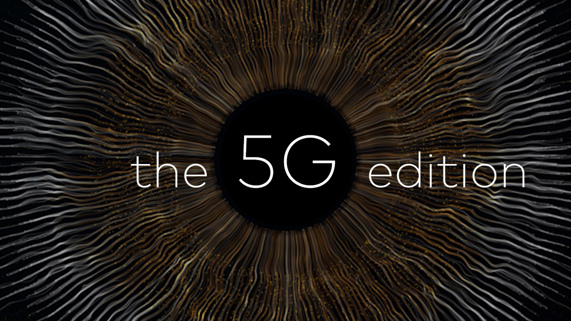
5G and the politics of change: Could nationalism erode innovation and economic growth?
March 9, 2021 | By Jesse McWaters5G has become a nexus for geostrategic competition, as countries around the world race to establish leadership in 5G and the innovations it will catalyze. The most visible example of this competition is 5G’s position as a flashpoint in the escalating trade and technology confrontation between the U.S. and China. This clash is having far-reaching implications on the adoption of 5G and, more troublingly, may presage a more adversarial and fragmented future for the development of “fourth industrial revolution” technologies.
One could be forgiven for imagining that “winning” the race for 5G is all about being the first nation to deploy a 5G network. The reality is rather more complicated. While the first countries to deploy 5G will have a head start in the development of 5G-enabled innovations, many analysts correctly point out that being “first past the post” is no guarantee of success. After all, the U.S. was not the first to deploy 1G, 2G, 3G, or 4G networks. Yet Silicon Valley is a world leader in building economic value on the foundations established by these networks.
Digging a little deeper, we can see that the move to 5G will involve a massively expensive, decade-long series of investments into mobile network infrastructure. That means that one way of “winning” 5G will be to play a dominant role in supplying the component parts of that infrastructure — a position that can be leveraged to develop entrenched relationships with governments and mobile network operators around the world to catalyze secondary innovation clusters (e.g., semiconductor design).
China has emerged as a leader in pursuing this path. A coordinated national strategy of managed competition, government support, and active engagement in the global 5G standards process has positioned Chinese national champions Huawei and ZTE as two of only four producers of core 5G network technology (alongside Europe’s Ericson and Nokia).
Although this approach could have worked for past mobile network upgrades, 5G requires network operators to place an unprecedented degree of faith in the provider of their core network equipment. While previous generations of mobile networks centered around upgrades to the physical hardware, 5G will be virtualized across a service-based architecture — which is a fancy way of saying that the real engine of 5G will be software operating in the cloud rather than static hardware. That change is central to some of 5G’s most revolutionary capabilities. Unfortunately, it also means that core network technology that is sold and installed in perfectly secure condition could later — unintentionally or intentionally — be made insecure via software updates provided by the equipment manufacturer.
Concerns over global imbalance
Some governments are deeply uncomfortable with the notion of placing so much trust in Chinese firms, particularly given the close ties they deem them to have with the Chinese government. They fear that Huawei and ZTE could facilitate the surveillance and exfiltration of sensitive data on behalf of Beijing or — in a nightmare scenario — that China could forcibly shut down their mobile networks. While experts disagree on the likelihood of these scenarios, many policymakers simply aren’t willing to take the risk and have chosen to bar Huawei and ZTE equipment from their 5G networks.
The U.S. has played a key role here, encouraging close allies, including members of the “five eyes” intelligence sharing alliance (Australia, New Zealand, Canada, the U.K., and U.S.), to ban or limit their use of Chinese 5G tech.
So where does this leave us? Countries will ultimately make the choice that they feel is right for them. A growing number of advanced economies with close ties to the U.S. — including notables such as Sweden, Japan, German, and France — have banned or placed significant restrictions on Huawei, while many less developed economies have found the lower costs and attractive financing terms offered by Chinese firms too good to refuse.
The good news is that since 5G is built (today) on a globally interoperable set of standards, the day-to-day experience of end users isn’t much impacted by these choices. Consumers will get to enjoy blazing-fast download speeds, while innovators can start working on the development of “made for 5G” offerings that will work on networks around the world.
The bad news is that 5G is just one example of how emerging technologies are becoming politicized, with potentially far-reaching consequences. This trend is most visible in the mounting tensions between the U.S. and China. The “clean network program,” launched by the U.S. in 2020, encourages its firms and allies to avoid Chinese apps, cloud service providers and undersea cables, while China is rolling out an “unreliable entity” list that could reportedly impose restrictions on the Chinese operations of U.S. tech giants like Cisco and Dell.
Meanwhile, the European Union has launched a large-scale effort to reduce its dependence on — and increase its influence over — foreign technology firms, and India has banned more than 100 Chinese apps. If these trends continue, the resulting fragmentation of global technology supply chains, business models, and standards will become more and more difficult to reverse. At best, that will have deeply negative impacts on the free flow of data and cross-border technological collaboration. At worst, it would establish a series of “digital iron curtains,” fragmenting today’s globally integrated world into a handful of noninteroperable technology spheres.
The case for a globally-integrated approach
While all these policies are driven by individual nation’s desire to safeguard its national security and stimulate economic growth at home, collectively as a group, they risk undermining those very goals by establishing impediments to global commerce and increasing our exposure to the unintended consequences of new technologies.
When nations establish barriers to cross-border data flows or choose to pursue proprietary noninteroperable standards, it erodes the capacity of new technologies to drive economic growth (for example, by establishing barriers to digital trade) and makes collaboration with our social and business peers in other countries more difficult. At the same time, the loss of common standards makes the development of global governance frameworks more challenging and hampers cross-border collaboration on the mitigation of risks such as cyberterrorism.
In order to fully realize the potential technologies such as 5G, policymakers must acknowledge that a globally integrated approach doesn’t require nations to sacrifice national security, privacy, consumer protection, or the vibrancy of their domestic technological ecosystems — but it does require them to commit themselves to making good faith efforts to keep the world connected and preserve a level playing field for global technological competition.
If we’re lucky, some new technologies might even be able to help us achieve this goal. For example, in the world of 5G, there is growing excitement about a new family of standards called Open Radio Access Network, or OpenRAN. OpenRAN could allow mobile network operators to mix-and-match network components from a wide variety of producers, reducing their reliance on the specialized offerings of the four core network equipment manufacturers.
It’s too early to say if OpenRAN is a silver bullet that can defuse geopolitical tensions around 5G, but if policymakers can stay focused on finding ways to work together, innovations like these stand a good chance of helping countries safeguard their geopolitical interests without giving up the enormous benefits of our globally integrated technology landscape.

